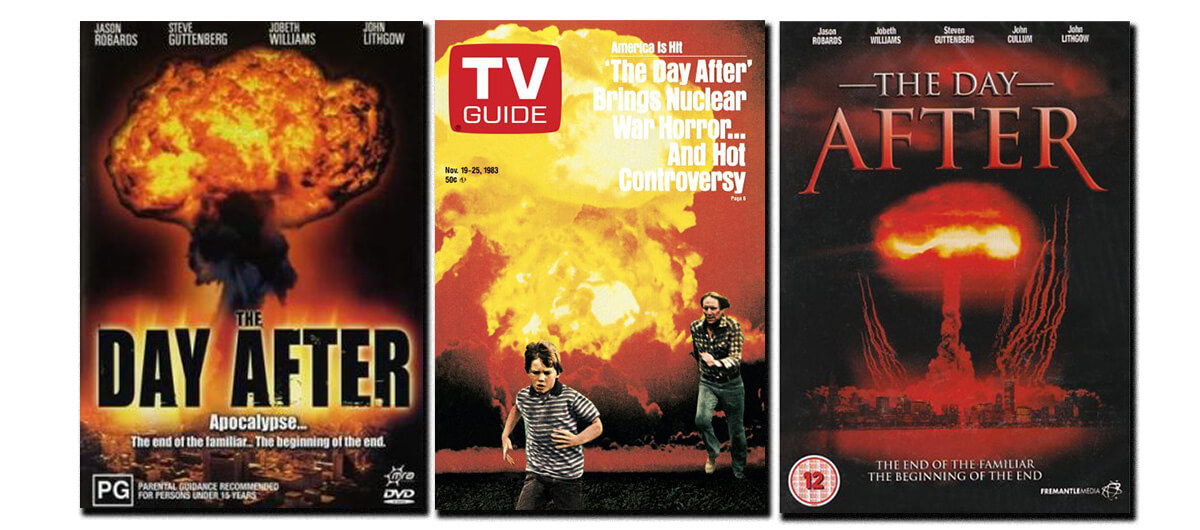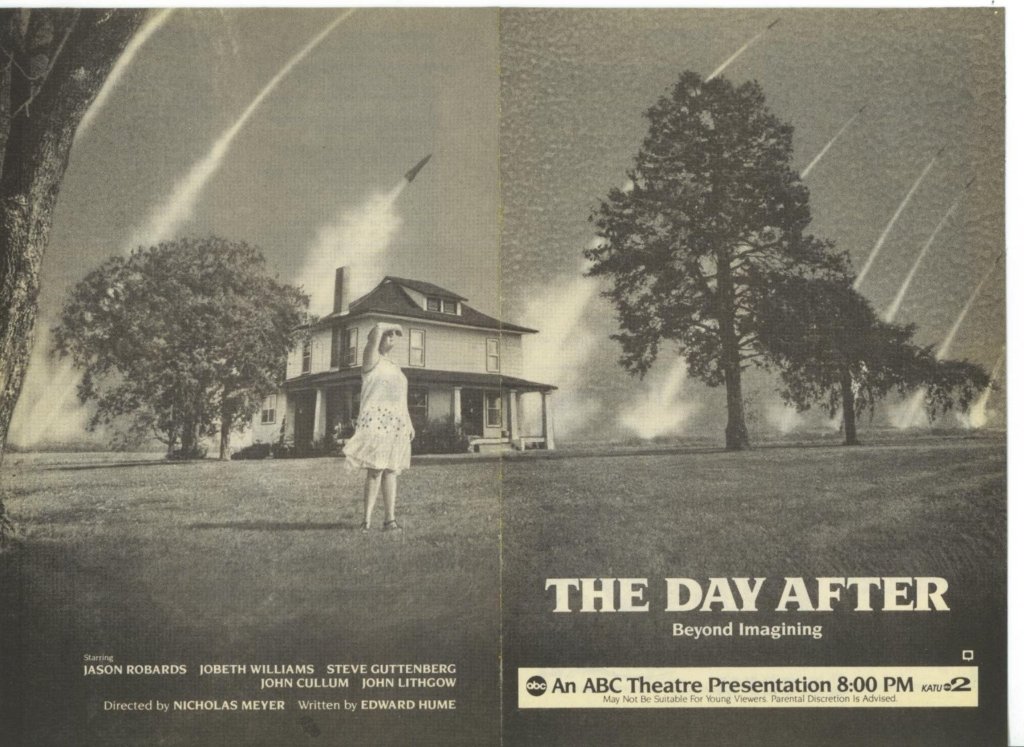

Politics
Revisiting the Terrifying Prophecies of “The Day After”
The 1983 TV film warned us about the consequences of a nuclear arms race. Could we be headed there again?
This article was made possible because of the generous support of DAME members. We urgently need your help to keep publishing. Will you contribute just $5 a month to support our journalism?
Secretary of State Pompeo’s announcement that the United States would abandon its longtime commitment to the Intermediate-Range Nuclear Forces Treaty has left me feeling, as my younger friends might say, triggered—I want to go back and re-watch The Day After, the 1983 made-for-TV film about nuclear war.
When ABC broadcast The Day After, in the fall of 1983, it was, as they used to say in the days before widespread cable and the internet, a major television event. It had particular resonance for me, not just as a Gen-X’er who lived amid the fear, but it was actually set in and around my hometown, Lawrence, Kansas, and much of it was filmed there. I was 18 when it aired, still living in my hometown, waiting tables, taking classes as a freshman at Kansas University.
The idea of a massive bomb hitting us here in the mainland United States seems far-fetched these days—despite fear-mongering during World War II, it always has been far-fetched. It has never happened, after all. The Day After tried to paint a realistic picture of what nuclear war would look like here, partly because the president then, despite his folksy reassuring manner, seemed deeply invested in an arms race with Russia that could only end badly. The movie was offered as a warning and rebuke, like when Jacob Marley’s ghost shows Ebenezer Scrooge there’s still one last chance to go back and try to be human.

Setting the movie near Kansas City made dramatic sense. Smack in the middle of the country, Kansas City is an easy synecdoche for the idea of the heartland. On a practical note, at that time, there were dozens of Minuteman missile silos in rural Missouri, just outside Kansas City. I read later that the movie’s director and producers had wanted to set more of it in Kansas City, but Lawrence, my hometown, 40 miles or so to the west, was more helpful during the filming. So they decided to annihilate Kansas City in the blast, leaving Lawrence to deal with what happened after. By the end of the movie, you envy those who died immediately.
People my age (I’m 53)—on the older side of Generation X are used to being overlooked. We all laughed when an image recently went viral on social media that simply left us out of the generational tally. Baby Boomers and Millennials make more noise, and they spend more, too. Our generation was tagged with a slacker label even before we graduated into a post-Reagan economic landscape where success was increasingly impossible without inherited wealth. We were the first generation to do worse than our parents. And we grew up terrified of nuclear war. Our nuclear era wasn’t exactly like the boomer version; most of us didn’t grow up with bomb shelters or duck-and-cover drills. Instead, we danced to songs like Modern English’s “Melt With You,” sang along to Prince’s “1999” when a faux-child’s voice asked, “Mommy, why does everybody have the bomb?” We figured we would probably die in a mushroom cloud. Why wouldn’t we slack off?
I had forgotten how controversial the film was. Many on the political right saw it as propaganda against the Reagan administration. There was a special report after the broadcast in which some regular people (including a family from Lawrence) talked about how they’d rather take their chances with nuclear warfare than endure being taken over by the Russians and subjugated by their communism. There was a candlelight vigil for peace the night the film aired; the next day, a local church planned a “pro-defense, pro-Reagan march.” My hometown newspaper ran editorials and letters to the editor arguing both sides, as if there are two sides to the question of whether it makes sense to launch bombs across the ocean at each other until everyone dies.
Rumor has it that Reagan credited The Day After with helping him get to the point of signing the INF treaty with Mikhail Gorbachev in 1987. Can we get someone to show it in the White House again?
When I first saw The Day After I was the same age as the college kids shown slowly succumbing to fallout. Now I’m closer to the age of the adults in the movie. It’s been a long time since I felt so close to nuclear war. But with Pompeo’s announcement, and Trump’s saber-rattling with North Korea, it starts to come back to me. Looking at what my friends are saying on social media, I suspect I’m not alone.
The movie genuinely scared people, and it was meant to. I remember feeling bereft as I watched the character played by John Lithgow try to find other human beings via ham radio. “This is Lawrence, Kansas,” he said over and over again, beseechingly. This was my town. It could also be anywhere. After the credits rolled, a black screen came up, these words on it:
The catastrophic events you have just witnessed are, in all likelihood, less severe than the destruction that would actually occur in the event of a full nuclear strike against the United States.
It is hoped that the images of this film will inspire the nations of this earth, their peoples and leaders, to find the means to avert the fateful day.
Nobody listens to Gen-X. But hear this: We don’t want to be back here again. And we don’t want it for our kids.
Before you go, we hope you’ll consider supporting DAME’s journalism.
Today, just tiny number of corporations and billionaire owners are in control the news we watch and read. That influence shapes our culture and our understanding of the world. But at DAME, we serve as a counterbalance by doing things differently. We’re reader funded, which means our only agenda is to serve our readers. No both sides, no false equivalencies, no billionaire interests. Just our mission to publish the information and reporting that help you navigate the most complex issues we face.
But to keep publishing, stay independent and paywall free for all, we urgently need more support. During our Spring Membership drive, we hope you’ll join the community helping to build a more equitable media landscape with a monthly membership of just $5.00 per month or one-time gift in any amount.
















































































